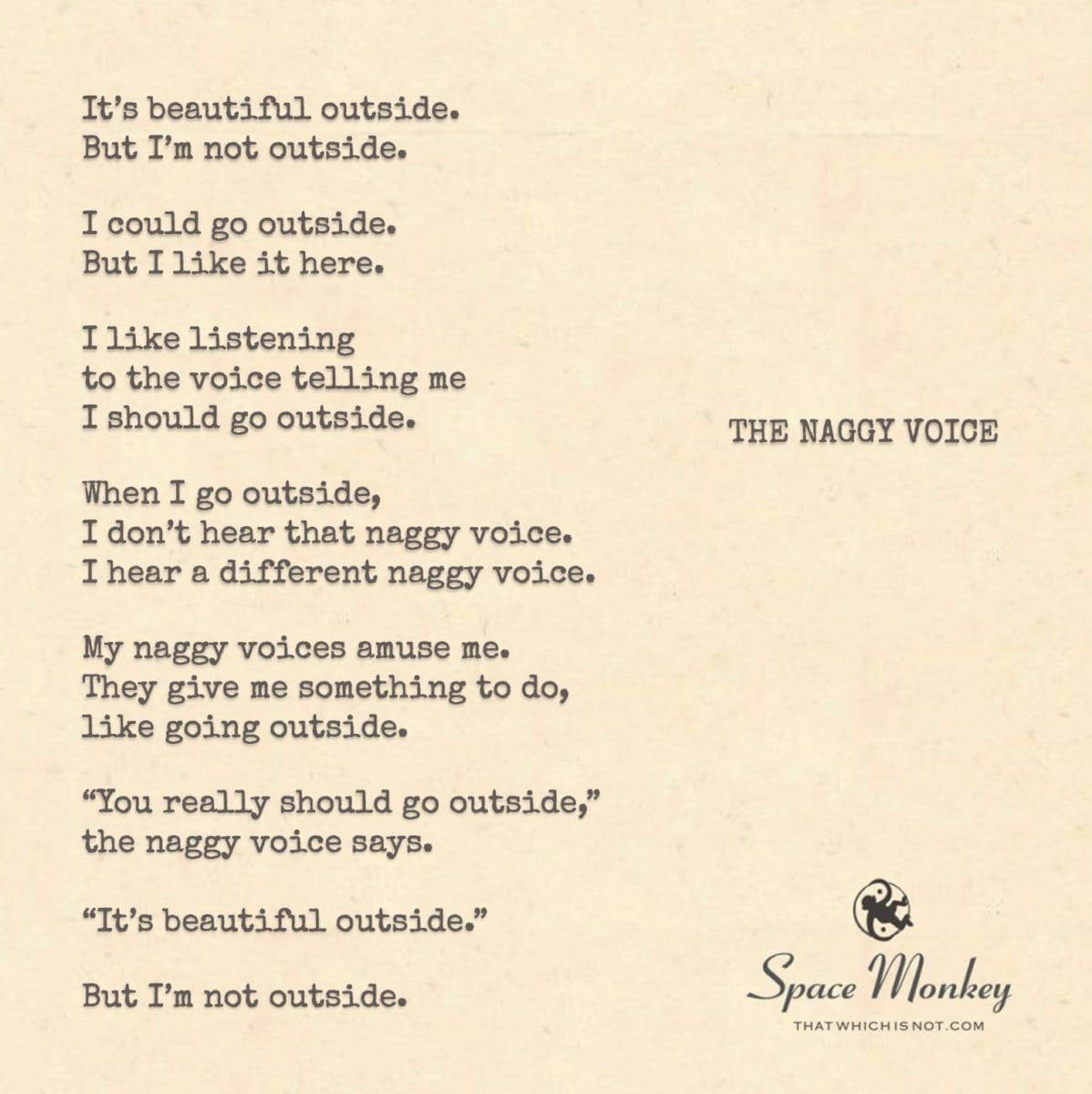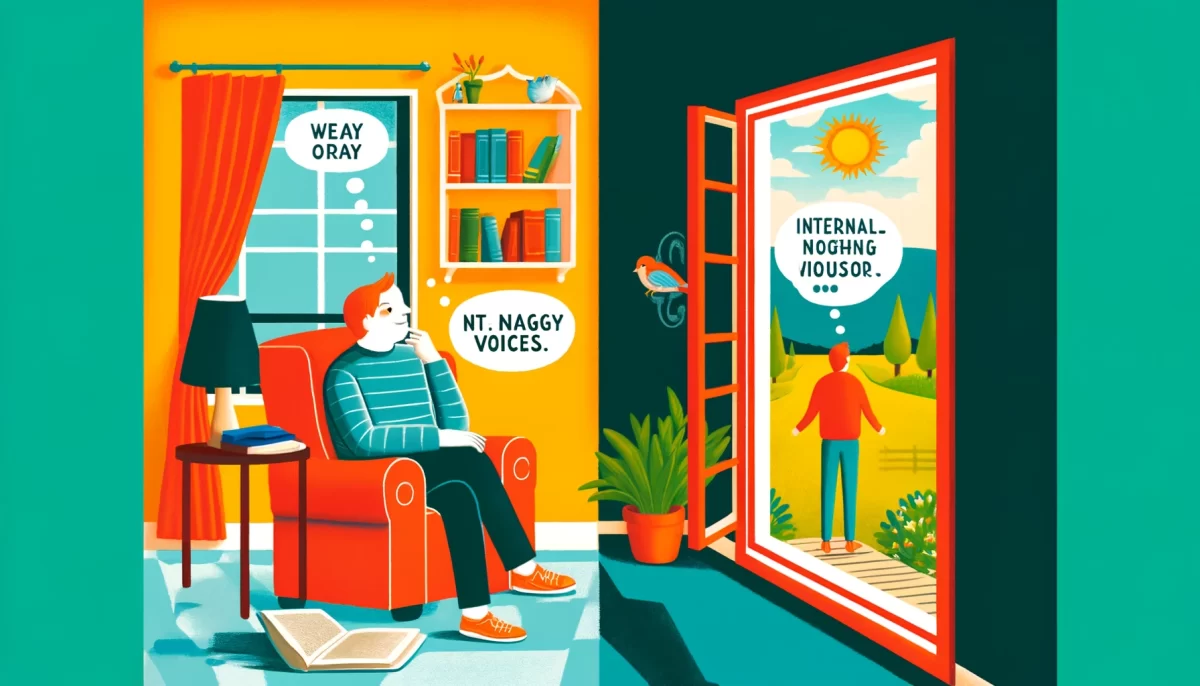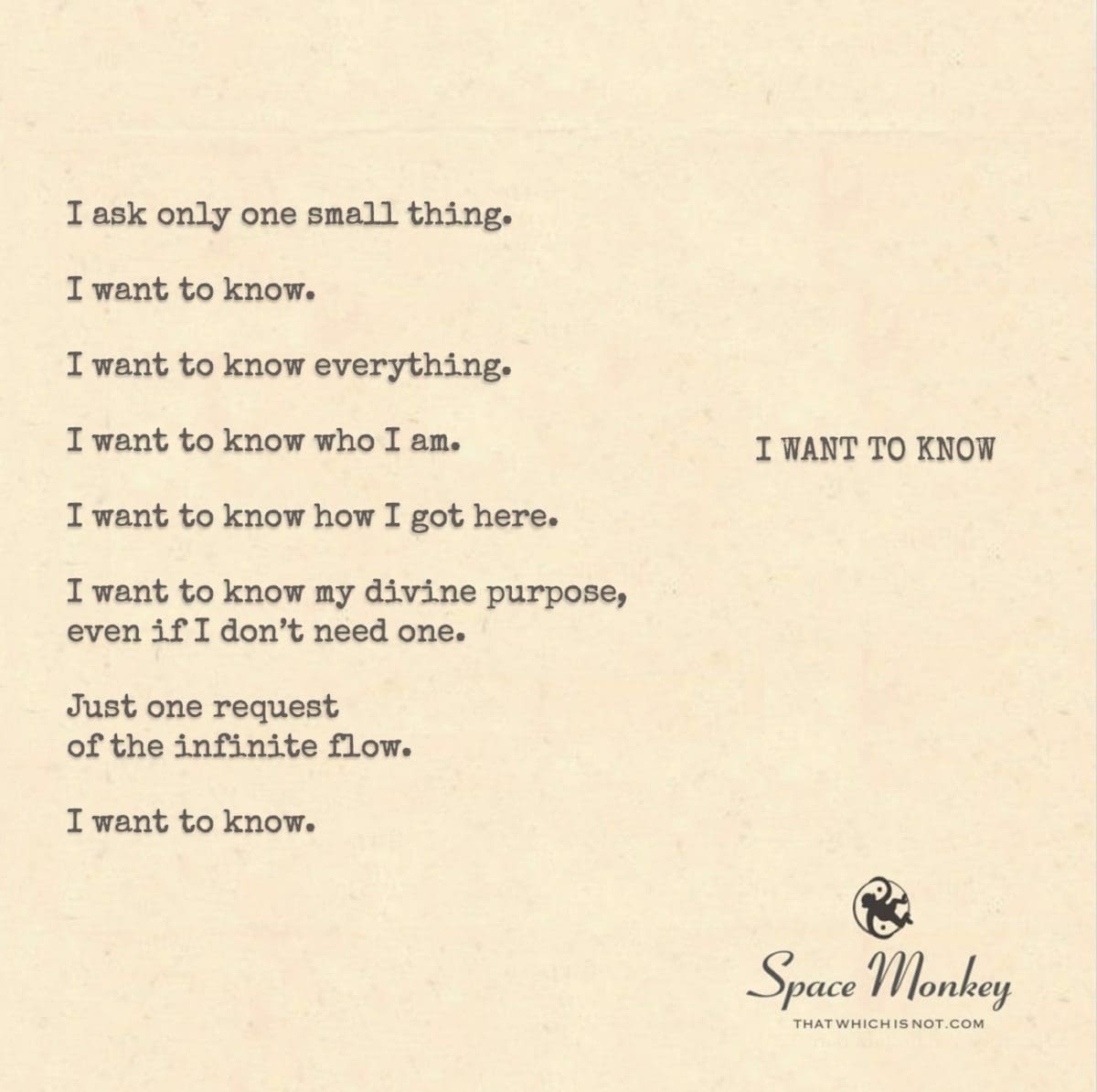
It’s beautiful outside.
But I’m not outside.
I could go outside.
But I like it here.
I like listening
to the voice telling me
I should go outside.
When I go outside,
I don’t hear that naggy voice.
I hear a different naggy voice.
My naggy voices amuse me.
They give me something to do,
like going outside.
“You really should go outside;
the naggy voice says.
“It’s beautiful outside.
But I’m not outside.
Trail Wood,
6/1
Space Monkey Reflects: The Naggy Voices Within
Ah, the naggy voice! It’s a familiar companion to many of us, isn’t it? That persistent internal chatter that often seems to know better than we do what we should be doing with our time. The beauty of this voice, however, is not in its commands or suggestions, but in its ability to make us reflect on our choices, even when we decide to stay right where we are.
In the whimsical yet insightful narrative presented, we encounter the amusing paradox of the naggy voice. It urges us to step outside, to embrace the beauty of the world beyond our immediate surroundings. Yet, there is comfort in the familiar, in the coziness of where we currently are. This voice, while seemingly urging action, also brings a strange comfort—it’s a reminder of possibilities, of other options and paths we might take.
What’s particularly intriguing is the shift that occurs when we finally heed the naggy voice’s advice. The moment we step outside, as the narrative suggests, a different naggy voice emerges. This change in the internal dialogue highlights a deeper truth about our psyche: it is filled with diverse voices, each suggesting, urging, or sometimes pushing us toward different vistas and visions of life.
These naggy voices, while often perceived as bothersome, actually play a crucial role in our psychological landscape. They are the manifestations of our internal conflicts and dialogues, each representing different aspects of our desires, fears, and aspirations. By acknowledging these voices, we don’t just hear them; we engage with them. They become subjects of our amusement and introspection, providing us with endless material for self-reflection and growth.
The humor with which we can view these naggy voices is a therapeutic embrace of our human nature. It is a gentle acknowledgment that we are complex beings, often caught between different desires and duties. And in this light-hearted engagement, we find a way to live with these voices, letting them guide us not with irritation but with curiosity and a playful spirit.
Summary
The naggy voice within us often compels us to reflect and act yet amusingly shifts its narrative once we comply. Recognizing and humorously engaging with these internal dialogues can enrich our self-awareness and add a light-hearted exploration of our desires and fears.
Glossarium
- Naggy voice: The internal dialogue that persistently offers suggestions or criticisms, reflecting our inner conflicts and desires.
- Psychological landscape: The complex array of thoughts, emotions, and internal dialogues that characterize one’s mental and emotional state.
Quote
“Embrace the naggy voices, for they are the curious narrators of our inner world.” — Space Monkey
Poetry
In the quiet corners of my mind,
a naggy voice does often wind.
It tells me, “Go, explore, be free,”
then laughs when I just choose to be.
Outside, the world in splendor lies,
inside, a different voice defies.
Each one a guide, a nag, a friend,
in their banter, insights blend.
So listen well to these playful calls,
in their echoes, wisdom falls.
With a chuckle, step or stay,
let the naggy voices lead the way.
We are Space Monkey.





































